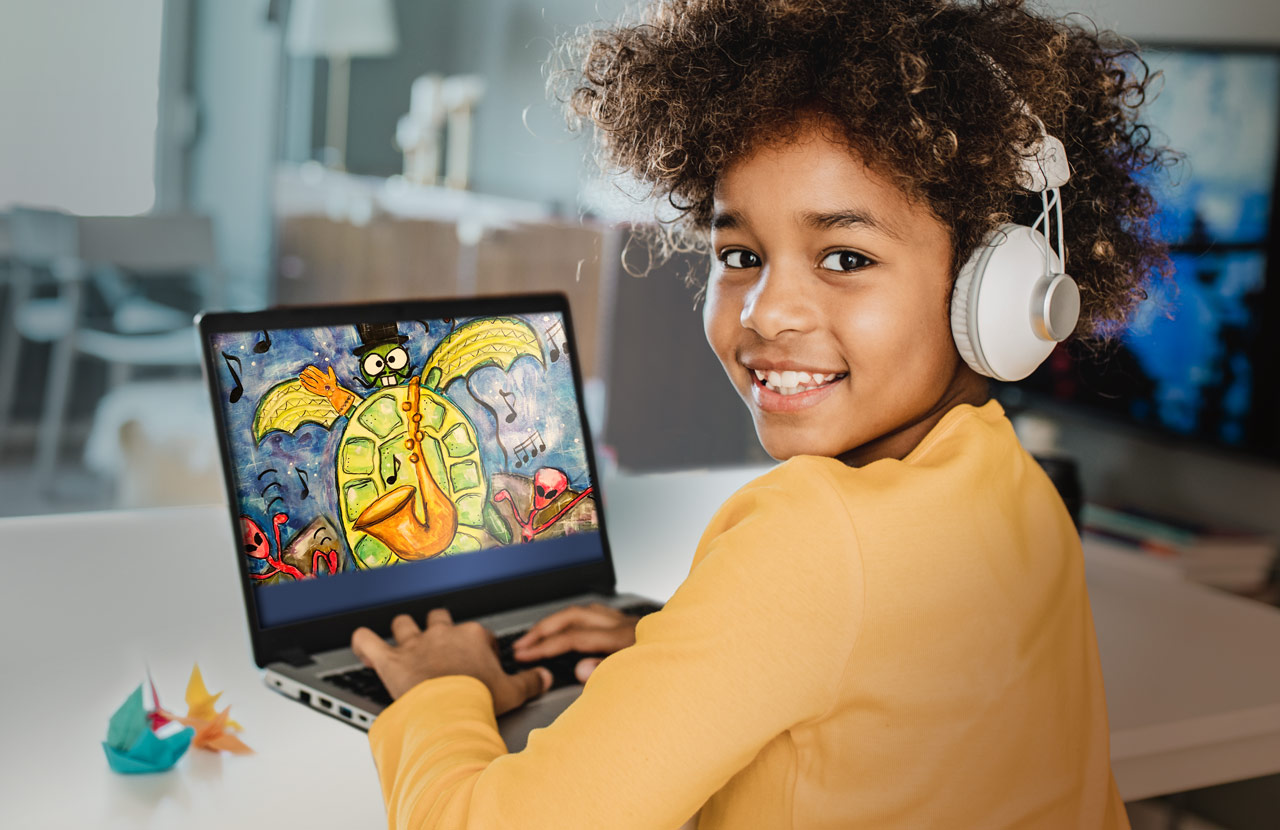But the COVID-19 pandemic brought new challenges for facilitating art therapy among young patients: the lack of access to art materials at home, and the need to find creative ways to keep their attention during telehealth sessions while the world around them was in disarray.
“As we pivoted to virtual therapy, our young patients lost the opportunity to bond with each other during the informal times between groups, which helps make our groups more cohesive,” says Linda Baker, MA, LAC, Allied Clinical Therapist at Penn Medicine Princeton House Behavioral Health’s Moorestown outpatient site.“It was important to find ways to help them engage in therapy over a screen while also connecting with one another.”
These goals led Baker to explore “third-hand” art therapy, a concept developed by Edith Kramer, art therapy pioneer. Aiming her computer’s camera at a canvas, Baker served as a liaison between the participants and the art as they took turns guiding her in the creation of a character.
The process began with deciding on the shape of the character’s head and body and continued with the specific features and environment. Once the character was completed, the group worked together to develop a corresponding story that gave it life and dimension.
Because art therapy facilitates healing through the opportunity to externalize internal struggles, the characters and stories often reflect the issues the participants are facing. For example, Boris the Tortoise Turtle (shown on cover) wanted to play jazz on his sax rather than clean up his room, so he drifted on a balloon to the moon where his melodies could be heard throughout the galaxy.
The Resilience Component
During a time when families have been facing high levels of stress and a loss of structure, the character-building approach incorporates elements that help to foster resilience among participants. This includes collaborative problem-solving, emotional regulation in being patient and waiting for one’s turn, a sense of engagement and accomplishment, the benefits of humor, the practice of mindfulness, the vision for an ideal world, and the social support of a therapist and peers.
“Through these characters, they are also creating possibilities—the essence of resilience,” explains Baker. “This process has helped them understand that anything is possible.”
For more information about child and adolescent services, visit princetonhouse.org or call 888.437.1610.
Article as seen in the Fall 2020 issue of Princeton House Behavioral Health Today.



